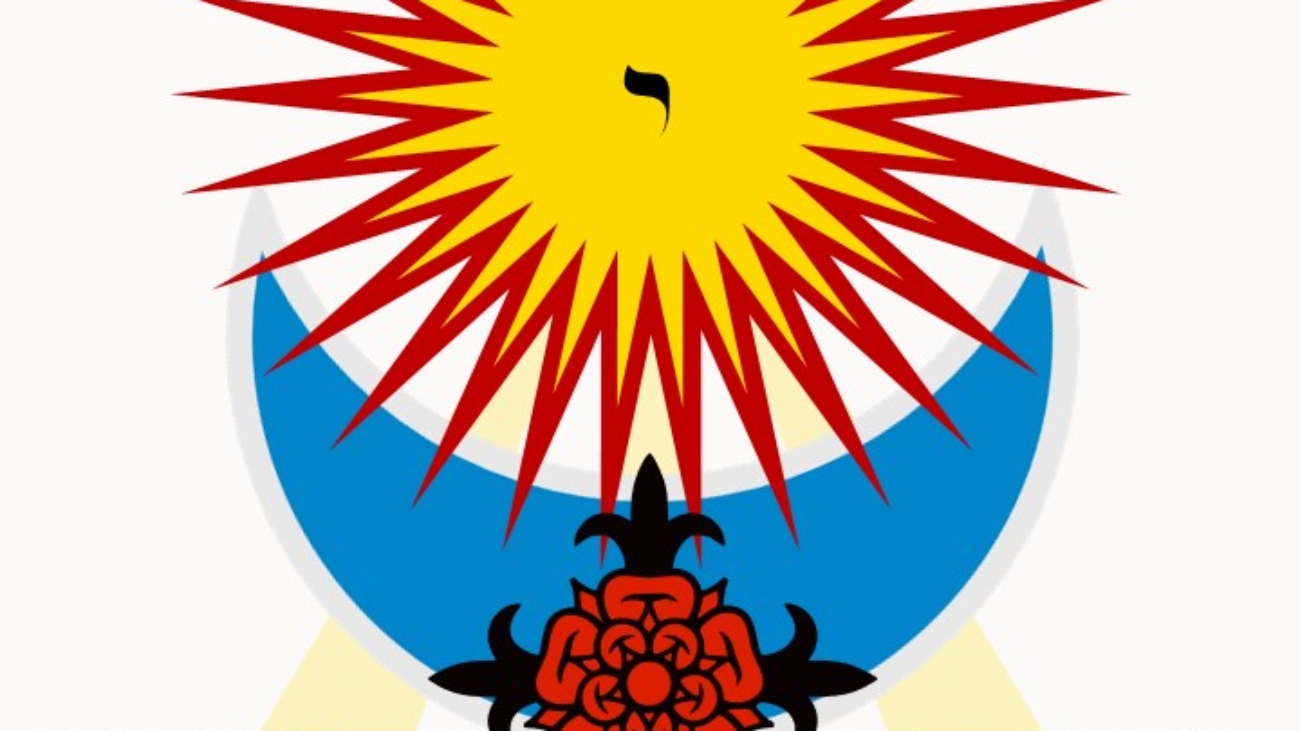The flower of mystery is the deep understanding of one’s identity with God. To eat its fruit is to savor immortality.
The Khu
Reflections on the Path in Eternity (Part 3)
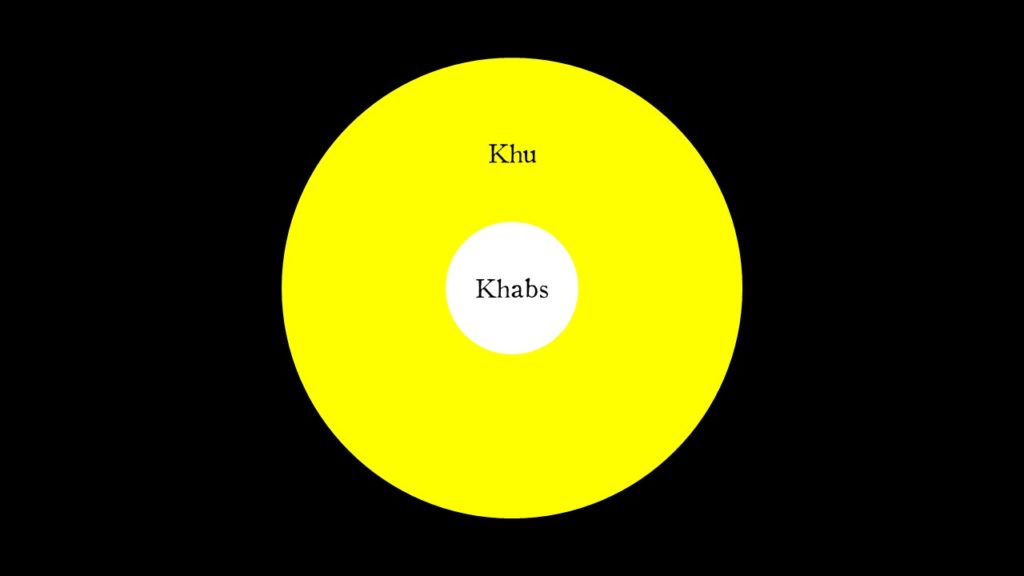
In the last post we saw that the star or soul of each individual is composed of two parts: the Khabs and the Khu. The Khabs is the manifestation of a distinct individual within the context of Nuit. The Khabs is the “house” of Hadit—your individual point of view—and as such it is the spiritual essence of who you are as an individual. We also saw that the Khabs is identical with the supernal triad on the Tree of Life, and as such it takes a triadic, reflective structure.
The Khu, on the other hand, is the “magical garment” of the star.
Khabs is the secret Light or L.V.X.; the Khu is the magical entity of a man […] This ‘star’ or ‘Inmost Light’ is the original, individual, eternal essence. The Khu is the magical garment which it weaves for itself, a ‘form’ for its Being Beyond Form, by use of which it can gain experience through self-consciousness
Old and New Comments on AL I.8
Each of us is Hadit, the core of our Khabs, our Star, one of the Company of Heaven; but this Khabs needs a Khu or Magical Image, in order to play its part in the Great Drama. This Khu, again, needs the proper costume, a suitable ‘body of flesh’, and this costume must be worthy of the Play.
New Comment on AL II.70
The Khabs represents the essence of who each of us is. It is possessed of the attributes of light, originality, individuality, and immortality. The Khu on the other hand is the mode by which the Khabs interacts with Nuit. If the Khabs is monistic (completely self-sufficient), the Khu is relational. It doesn’t exist without the interaction between the Khabs and Nuit.
And for that matter, the relationship between Khabs (or Hadit) and Nuit does not exist without the Khu. In other words, experience or embodiment of some kind is the necessary condition of the love “play” between Nuit and Hadit.
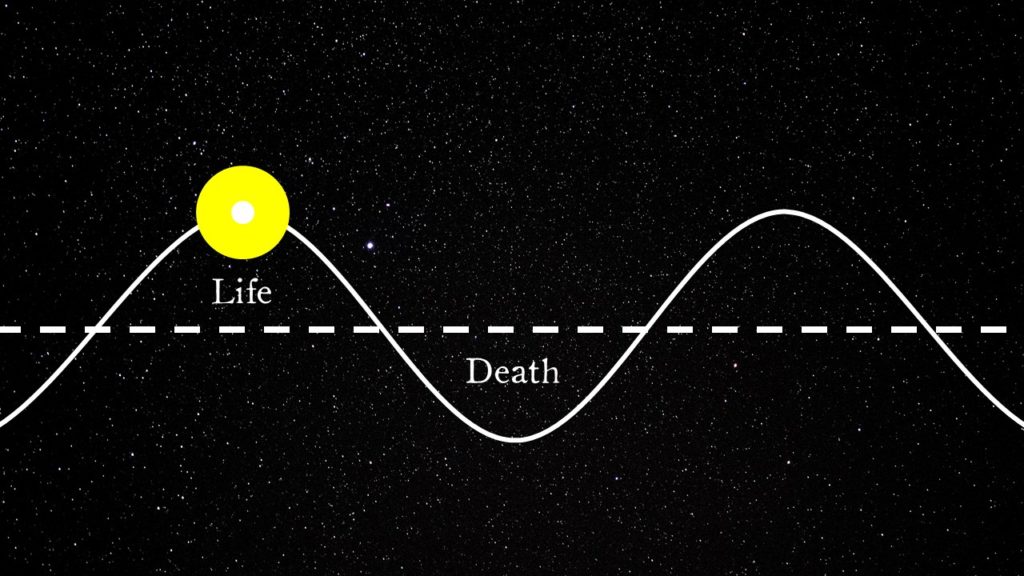
One answer to the question “Why do we incarnate?” is that incarnation (whether on this plane or some other) is a necessary precondition for Hadit’s going. In a subsequent post we can look at what some of the consequences of that are.
Unlike the Khabs of an individual which cannot be seen (arguably not even by the individual whose Khabs it is), since the Khu is relational, it is also manifest and can be seen either by the individual whose Khu it is or by others.
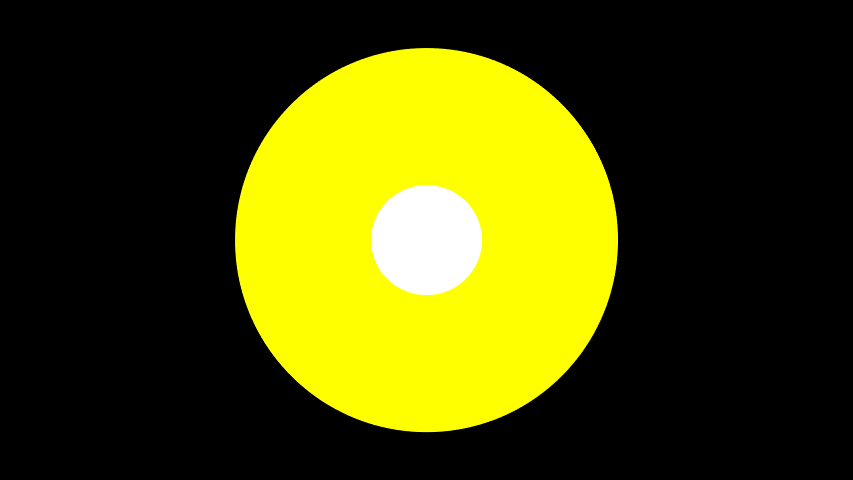
Also, since the Khu is a function of the interaction between the Khabs and Nuit, it is experiential and elastic. It grows and shrinks and changes in complexity in accordance with how much and what kind of experiences of Nuit one chooses to have.
“Every man and every woman is a star,” that is, an aggregate of such experiences, constantly changing with each fresh event, which affects him or her either consciously or subconsciously.
“Introduction” to the Book of the Law
the more complex the Khu of the Star, the greater the man, and the keener his sense of his need to achieve it.
New Comment on AL II.74

If the Khabs is the supernal triad on the Tree of Life, the Khu is composed of the subsequent seven sephiroth.
With each incarnation, the sephiroth below Binah are recreated anew, following the path of the Flaming Sword. At death, the lower sephiroth are jettisoned, and the essence of the Khabs is completely withdrawn back into the supernal triad.
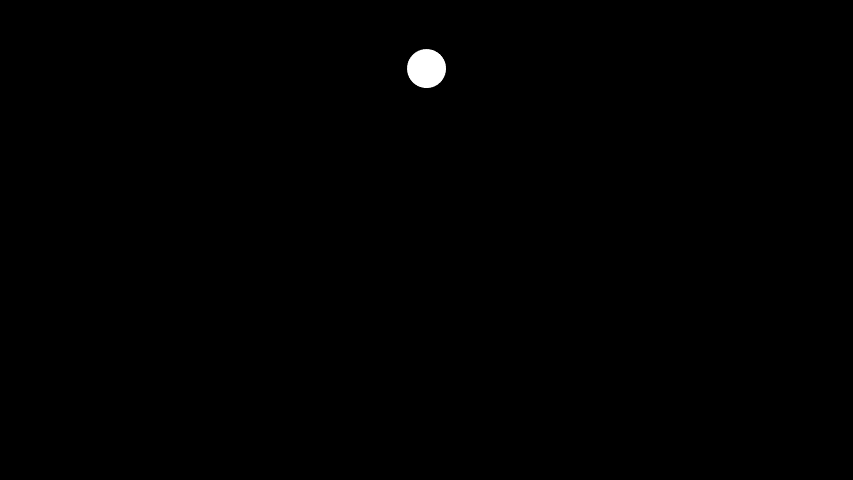
The exception to this is the individual who, through mystical and magical discipline, has opened and strengthened the pathways to their own Khabs.
[T]he Supernal Triad constitutes (or, rather, is an image of) the “eternal” Essence of a man [i.e., his Khabs]; that is, it is the positive expression of that ultimate “Point of View” which is and is not and neither is nor is not etc. Quite indestructible. Now when a man spends his life (a) building up and developing the six Sephiroth of the Ruach so that they cohere closely in proper balance and relation, (b) in forging, developing and maintaining a link of steel between this solid Ruach and that Triad, Death merely means the dropping off of the Nephesch (Malkuth) so that the man takes over his instrument of Mind (Ruach) with him to his next suitably chosen vehicle.Magick without Tears, chapter 38
Appear on the throne of Ra!
AL III.37
Open the ways of the Khu!
Lighten the ways of the Ka!

This is how the magical memory of a star can be built up over a series of incarnations.
This doctrine seems to imply that wisdom is not just passed down through the historical record but can also accumulate in certain stars on the Akashic plane.
Every star is already irreducibly individual and therefore unequal with any other star. But additionally it is also possible certain stars are “great beings” who, for reasons of having built up a magical memory over time, are possessed of extraordinary wisdom.
[C]ertain vast “stars” (or aggregates of experience) may be described as Gods. One of these is in charge of the destinies of this planet for periods of 2,000 years.“Introduction” to the Book of the Law
It’s possible Crowley understood this as the mechanism by which “Secret Chiefs” are created.
It would explain why he used names such as “Aiwass” and “V.V.V.V.V.” both as aspects of himself and as names of separate individuals. “Aleister Crowley” was merely the latest expression or mode (Khu) of an essence (Khabs) of which Aiwass and V.V.V.V.V. were others.
Crowley elaborates on metempsychosis in Liber Aleph, “De Adeptis R. C. Escatologia,” which should be studied closely by initiates of the III° of Mysteria Mystica Maxima.
But it is this continual extension and withdrawal of the Khu—and hence the relations of the Khabs with Nuit—which is visually depicted again and again in the movie.
Reflections on the Path in Eternity (Part 2)

Another relationship I establish at the beginning of the video is between the soul (which in Thelema is called the star) and the Tree of Life of Qabalah. (I use Kabbalah when talking about the Jewish mystical tradition itself and Qabalah when talking about the interpretation of it by the Golden Dawn and Crowley.)
Tree of Life/Qabalah Basics
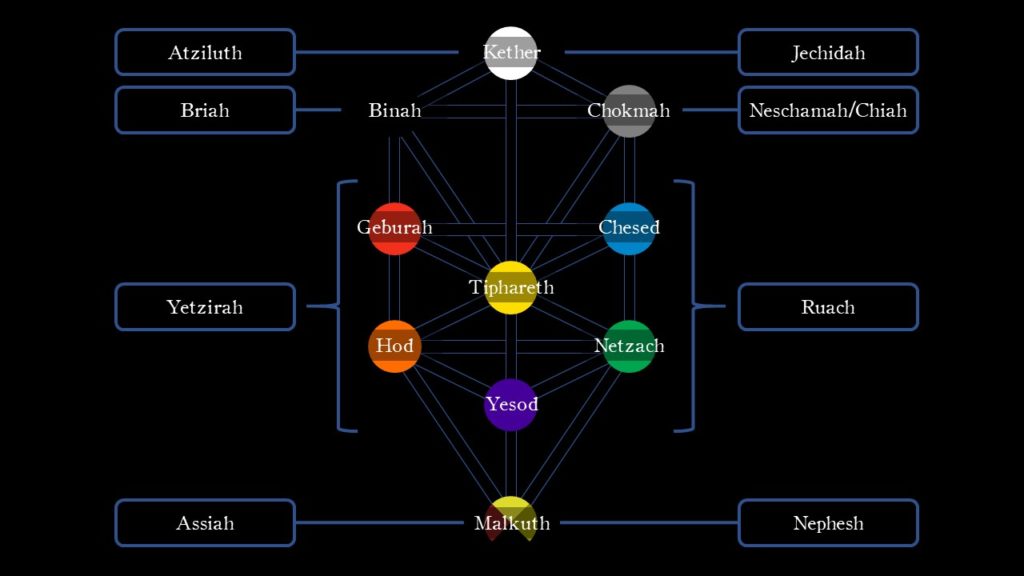
That such a relationship exists shouldn’t be a surprise. The Tree of Life diagram is meant to show the relationship between the soul (the microcosm) and the four worlds (the macrocosm).
The bottom circle or sephira, Malkuth (“kingdom”), is Assiah (“the world of action”). It is often identified with the material world, although for reasons we’ll get into later, that is not necessarily the case in Thelema.
The microcosmic correlate of Malkuth/Assiah—the part of the soul that resides there—is the Nephesh. This is sometimes translated as “animal soul”. It is the part of the individual that is sentient, i.e., which experiences sensations and feelings.
Going upward from Malkuth, the next six sephiroth are Yesod (“foundation”), Hod (“splendor”), Netzach (“victory”), Tiphareth (“beauty”), Geburah (“severity”), and Chesed (“mercy”). Together they comprise the macrocosmic realm of Yetzirah (“the formed world”). Yetzirah is also known as Zeir Anpin or Microprosopus, the Lesser Countenance (in contrast with Arich Anpin/Macroprosopus).
The part of the soul that resides in Yetzirah is called the Ruach (“spirit”). It is typically identified with the moral soul or the discriminating capacity.
Above that we have Binah (“understanding”) and Chokmah (“wisdom”). Together they comprise Briah (“the world of creation”). This is analogous to the world soul of Neoplatonic philosophy.
The part of the soul that resides in Binah is called the Neschamah, the intelligence or divine intuition. The part of the soul that resides in Chokmah is the Chiah, which in Thelema it is identified with the creative will or impulse of Jechidah.
Jechidah is the “quintessential principle of the soul,” and it is identical with Kether, the uppermost sephira on the diagram, which is analogous to the One of Neoplatonic philosophy.
All three of the “supernal” sephiroth—Binah, Chokmah, and Kether—transcend time, but Kether also transcends being and non-being. It transcends opposition all-together.

“Beyond” Kether there are the purely transcendent, incomprehensible aspects of divinity, which in Kabbalah are called Ain (Nothingness) and Ain Sof (without limit/infinity). The Hermetic Qabalah of Knorr von Rosenroth and the Golden Dawn includes Ain Sof Aur (limitless light) as a third “negative veil”.
In Kabbalah Ain and Ain Sof (being and nothingness, essentially) are considered to be identical with one another, and Ain Sof is for all intents and purposes identical with Kether.
Qabalah and Thelema
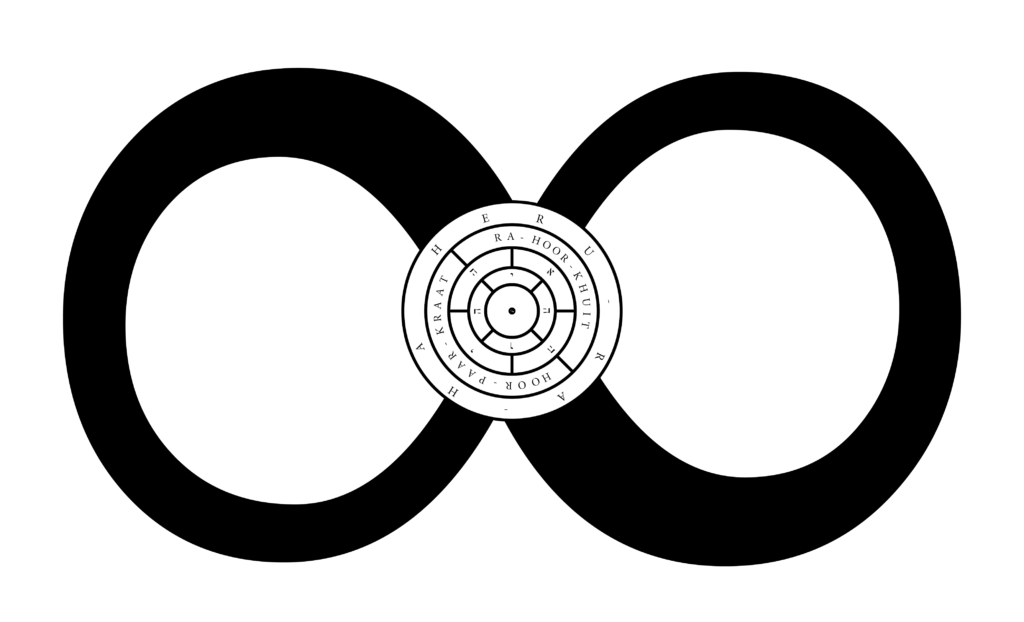
Kether (Heru-Ra-Ha) as the Manifestation of the Interaction between Nuit (infinity) and Hadit (the inverse of infinity) (more…)
Thelema is not traditional Jewish mysticism, although Crowley used the terminology and the framework of Qabalah in order to express his own ideas and intentions.
So you find the same idea of a macrocosm divided up into four worlds, and there are parts of the soul which correspond to or “live” in those four worlds, so that the individual’s life or experience is divided across different realms which are ultimately (mystically) one realm.
In Thelema the macrocosm is composed of the interplay or interaction between two principles, Nuit and Hadit.
Nuit represents the sum total of all possibility. She is infinite space. Hadit represents any particular point of view on those possibilities. He is the infinitely small point.
Nuit is analogous to Ain Sof (infinity) in classical Kabbalah, and Hadit is analogous to Ain (nothingness or the inverse of infinity). Their interaction gives rise to Ra-Hoor-Khuit (sometimes also called Heru-Ra-Ha to include Hoor-paar-kraat), the Crowned and Conquering Child, who is also Ain Sof Aur or Kether.
Since Kether is “pregnant” with Tetragrammaton, you get the familiar breakdown into the remaining nine other sephiroth and the four worlds.
The Khabs and the Tree of Life

In Thelema the immortal soul of the individual is called the star. This comes from AL I.3 (The Book of the Law, chapter 1, verse 3):
Every man and every woman is a star.
Crowley subdivides the soul or star according to the usual schema of Jechidah, Chiah, Neschamah, Ruach, and Nephesh, but he introduces another subdivision based upon AL I.8-9:
The Khabs is in the Khu, not the Khu in the Khabs. Worship then the Khabs, and behold my light shed over you!
Khabs and Khu are Egyptian terms. In the context of Thelema, Khabs is the “House” of Hadit. Hadit as we saw is the individual point of view on Nuit. Khabs then is the manifestation of that unique interaction. You can think of it almost as the light given off by the energetic interaction between Hadit and Nuit. And in fact in the Golden Dawn—where Crowley would have first encountered this term—Khabs was used as synonymous with light as in the phrase Khabs am Pekht, which means “light in extension” (cf. Ain Sof Aur above).
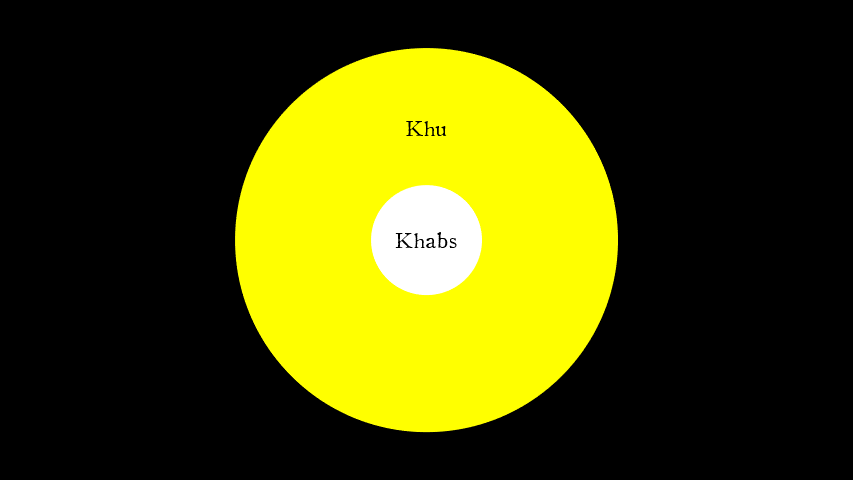
In Thelema the whole of the supernal triad—Kether, Chokmah, and Binah—is considered to be the Khabs. Kether is the essence of the Khabs, taken in and of itself, which is also called Jechidah. Chokmah represents Chiah, the creative impulse or will of the Jechidah. In other words, Chokmah/Chiah represents the mode of going or expression which is characteristic of this particular Khabs or soul. And finally Binah represents the Neschamah of the Khabs. It is the intelligence or intuition of what the Khabs wishes to discover about itself.
It might help to translate these terms into those of ordinary self-conscious.
I have a self which seems stable over time. This is like the Jechidah or Kether. That self or subject is capable of generating thoughts and other mental states. The analog in the supernal triad would be Chiah or Chokmah. Finally, when I hear thoughts in my head, I am able (if I am not insane!) to recognize them as mine. This capacity of self-recognition is analogous to Neschamah or Binah.
Both ordinary self-consciousness and the supernal triad have this triadic or circular structure.
That’s plenty for today. Here are the main takeaways:
- In Thelema the soul of the individual is called the star.
- The star is divided up into the Khabs and the Khu.
- The Khabs is the House of Hadit (the individual point of view on Nuit).
- The Khabs is identified by Crowley with the supernal triad of the Tree of Life: Kether, Chokmah, and Binah.
Next time we’ll consider the Khu and its relationship to the Khabs and the Tree of Life.
Reflections on the Path in Eternity (Part 1)

I was recently inspired to create an animated movie based upon my understanding of the Path in Eternity and its relation to certain magical formulae.
The phrase Path in Eternity comes from a passage in Magick Without Tears where Aleister Crowley is describing the initiation rituals of the Man of Earth degree of Ordo Templi Orientis.
Let us begin at the beginning. What is a Dramatic Ritual? It is a celebration of the Adventures of the God whom it is intended to invoke. (The Bacchae of Euripides is a perfect example of this.) Now, in the O.T.O., the object of the ceremonies being the Initiation of the Candidate, it is he whose Path in Eternity is displayed in dramatic form.
Magick Without Tears, Chapter 13, The System of the O.T.O.
He then describes this Path in Eternity in relation to the six sub-degrees of the Man of Earth in the following way:
- O° – Minerval – The Ego is attracted to the Solar System.
- I° – Initiation – The Child experiences Birth.
- II° – Consecration – The Man experiences Life.
- III° – Devotion – He experiences Death.
- IV° – Perfection, or Exaltation – He experiences the World beyond Death.
- P.I. – Perfect Initiate – This entire cycle of Point-Events is withdrawn into Annihilation.
There are three important conclusions to draw here.
First, as in the mystery schools of the ancient world, the purpose of O.T.O. initiation—in particular, this series of six sub-degrees that comprises the Man of Earth—is to introduce a single individual or candidate to a single god. The main difference between the O.T.O. initiations and those predecessor schools is that in O.T.O., the god the candidate is being introduced to is none other than themselves. In Thelema, the term for this god—the divine part of each individual—is the Secret Self or Hadit.
Second, the purpose of the Man of Earth initiations is to dramatize the “path” taken by this god: a complete cycle in which the soul is drawn into incarnation, dies, and is withdrawn back into nothingness. The initiations are conducted in service to and with reverence toward that way of going which is characteristic of the Hadit which all of us truly is. The Path in Eternity is that toward which the entire series of rituals is oriented. The rituals derive their meanings from that Path.
Third, that path has a characteristic shape. It’s cyclical. It’s a passage from silence to speech and back to silence again. This is the exact same path as that taken by the Holy Guardian Angel which Crowley describes in Liber DCLXXI vel Pyramidos and which I quote at the beginning of the video:
For from the Silence of the Wand
Unto the Speaking of the Sword,
And back again to the Beyond,
This is the toil & the Reward.
This is the Path of HVA—Ho!
This is the Path of IAO.
So one of the first points I’m making in the video is that the Man of Earth series of initiations connects at a deep level with one of the core concepts of Thelema, namely, the idea of the Secret Self aka Hadit aka the Holy Guardian Angel.
The particular way in which it connects with that core concept is to show the characteristic going of that god, and to show how that way of going makes contact with an individual human life. In other words the conditions we find ourselves subject to—birth, aging, and death—are not incidental or exterior to our divinity. In fact they are necessary components of the way our divinity expresses itself.
This helps us begin to make sense of another one of the claims Crowley makes about these rituals:
The main objects of the instruction were two. It was first necessary to explain the universe and the relations of human life therewith. Second, to instruct every man how best to adapt his life to the cosmos and to develop his faculties to the utmost advantage. I accordingly constructed a series of rituals, Minerval, Man, Magician, Master-Magician, Perfect Magician and Perfect Initiate, which should illustrate the course of human life in its largest philosophical aspect. I begin by showing the object of the pure soul, “One, individual and eternal”, in determining to formulate itself consciously, or, as I may say, to understand itself.
Aleister Crowley, Confessions
This larger, universal context in which Crowley wishes to situate or orient the individual human life is the aforementioned Path in Eternity, which in turn is the characteristic way of going of Hadit.
Crowley on liberation, sexual freedom, and eucharist
A voluptuous statement on what liberation looks like from a Thelemic perspective, as it relates to sexual freedom and a eucharistic rite:
The supreme and absolute injunction, the crux of your knightly oath, is that you lay your lance in rest to the glory of your Lady, the Queen of the Stars, Nuit.
Your knighthood depends upon your refusal to fight in any lesser cause. That is what distinguishes you from the brigand and the bully. You give your life on Her altar. You make yourself worthy of Her by your readiness to fight at any time, in any place, with any weapon, and at any odds.
For her, from Whom you come, of Whom you are, to Whom you go, your life is no more and no less than one continuous sacrament. You have no word but Her praise, no thought but love of Her. You have only one cry, of inarticulate ecstasy, the intense spasm, possession of Her, and Death, to Her.
You have no act but the priest’s gesture that makes your body Hers. The wafer is the disk of the Sun, the star in Her body. Your blood is split from your heart with every beat of your pulse into her cup. It is the wine of Her life crushed from the grapes of your sun-ripened vine. On this wine you are drunk. It washes your corpse that is as the fragment of the Host, broken by you, the Priest, into Her golden chalice. “You, Knight and Priest of the Order of the Temple, saying Her mass, become god in Her, by love and death. This act of love, though in its form it be with a horse like Caligula, with a mob like Messalina, with a giant like Heliogabalus, with a pollard like Nero, with a monster like Baudelaire, though with de Sade it gloat on blood, with Sacher-Masoch crave for whips and furs, with Yvette Guilbert crave the glove, or dote on babes like E.T. Reed of ‘Punch’; whether one love oneself, disdaining every other like Narcissus, offer oneself loveless to every love like Catherine, or find the body so vain as to enclose one’s lust in the soul and make one lifelong spinthria unassuaged in the imagination like Aubrey Beardsley, the means matter no whit.
Bach takes one way, Keats one, Goya one.
The end is everything: that by the act, whatever it is, one worships, loves, possesses, and becomes Nuit.
—Aleister Crowley, NC on AL I.52
Eucharistic Magick Cheatsheet

I recently did a video called DIY Eucharistic Magick wherein I broke down how to create your own ritual eucharist with items you probably have at home. For those who want a reminder of that procedure without having to watch the whole video again, I present this little cheatsheet.
Step One: Preliminaries
Chastity: Keep firmly in mind before, during, and immediately after the ritual that its purpose is to bring about union between you and your Holy Guardian Angel.
Fasting: Fast for a few hours beforehand.
Aspiration: Bring a degree of seriousness or religiosity to what you are about to do.
Step Two: Construct your Altar
You will need:
- An altar, preferably something waist-height while standing, but any table top with also do.
- A candle.
- Some incense.
- Some water and salt for purification.
- Elements for your eucharist—something to eat and something to drink are good.
Step Three: Prepare the Temple
Keeping in mind the three preliminaries mentioned above, purify and consecrate your temple space. This can be done in the following way:
Purification: Mixing some salt and some water, say, “Let the salt of earth admonish the water to bear the virtue of the great sea. Mother, be thou adored!” Then spring the water around you and on your altar and perhaps over you. Say, “For pure will, unassuaged of purpose, delivered from the lust of result is every way perfect.”
Consecration: Lighting the incense, say, “Let the fire and the air make sweet the world. Father, be thou adored.” Cense around you and over you and say, “I am uplifted in thine heart, and the kisses of the stars rain hard upon thy body.”
Step Four: Declare your Intent
Take an oath before the gods, stating what you are about to do. The following is one of several ways to do this:
“Do what thou wilt shall be the whole of the Law. It is my will to consummate this eucharist. That I may fortify my gross and subtle bodies thereby. That I may accomplish the great work. Love is the law, love under will.”
Step Five: Consecrate the Eucharist
Declare what the eucharist is, what you are about to do with it, and what the final outcome will be. You can use the IAO formula for this.
Declare what the eucharist is (I): In some sense declare the food to be the body of God and the drink to be the blood of God. In my example in the video, I treat the bread as the body and the water as the vitality or movement of God. Use your imagination here depending on what you choose as elements.
Declare what you will do with them (A): This ritual structure requires you to transform the elements in some way, usually breaking them or perhaps burning them. This can be looked at as a sacrifice or a transmutation. Declare that you will do this. Offering them to the Sun is a good analogy, as the Sun represents both unification and destruction.
Declare what the final outcome is (O): In the IAO formula, O is resurrection or eternal life. You can think of this as union with God/the Holy Guardian Angel. Declare that this is your ultimate purpose using words of your choice.
Step Six: The General Invocation
This is the invocation of the particular being or energy you hope to unite yourself with through the consumption of the eucharist. This could be a prayer of your creation to your Angel. It could be a prayer to Ra-Hoor-Khuit, such as I use in the video. It could be the “Unity uttermost showed!” portion of Liber AL. It could be the invocation of the Secret Lord from the Anthem of the Gnostic Mass. This is an invocation of your highest idea of divinity. Be creative.
Step Seven: Destruction of the Eucharist
“Sacrifice” the eucharist somehow. This is the enactment of the “A” portion you described above. You could break the food, combine the elements somehow, maybe burn a portion, mix it with blood, bodily fluids, or smoke. Use your imagination to transform/transmute the elements, thereby releasing their spiritual potentials.
Step Eight: Consumption of the Eucharist
Again with the Preliminaries mentioned above in mind, solemnly consume the elements of the eucharist. Observe a short moment of silence after.
Step Nine: Declare your Union with God
Using words and gestures of your choice, declare your union with the God invoked in Step Six. This is the enactment of the “O” portion you described above. You can cross your arms and say, “There is no part of me that is not of the gods” or “I am clothed with the body of flesh, I am one with the eternal or omnipotent god.” Or you can create something of your own.
And that’s all there is to it! I broke it out into more steps here than in the video, so hopefully it’s a little easier to understand.
If you use this method to create your own ritual, record and post it on Youtube or let me know! Good luck!
Between Rationalism and Fanaticism

In my opinion what makes Thelema distinctive is not the occultism, not the ontology, not the ethics, not the individualism. It’s that he took the western occult tradition with its God as a creative artist and inflected it through a Nietzschean understanding of life.
Renaissance occultism is based upon a view of the cosmos where everything is ordered into spheres or levels with Earth as the focus. Natural magic is about drawing power or spiritus down from higher spheres into lower ones. “Cabalistic” magic is about ascending to superluminary spheres and mastering the angelic forces there—which tips over very easily into mysticism, as it does in Thelema. In short it’s based on a hierarchical, anthropocentric view of the universe as a kind of container focused on human affairs, and the container is overall not that large.
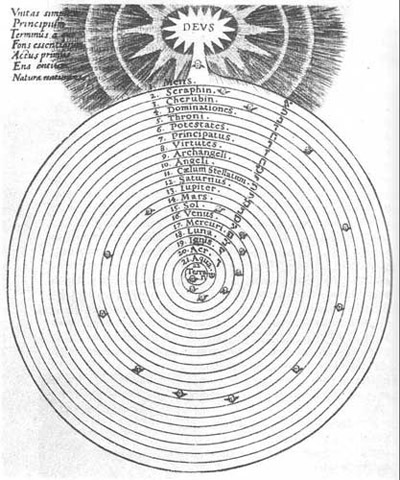
This view was largely replaced by the natural philosophy in the 17th and 18th centuries. According to this new view, the universe does not behave according to purposes but rather mechanisms. There are no “pulls” in the universe, only “pushes”. And the universe in which these abstract mathematical laws operate is vast enough to overwhelm the imagination and the human perspective all together. The picture of the universe generated by this natural philosophy ultimately left up in the air the place of humans in it. And with this disenchanted view of nature came a challenge to both religion and magic.
Rather than recoiling from this picture of nature into a kind of reenchanted fantasy about life, Crowley instead embraces it. The sheer enormity of the cosmos is one of the premises of Crowley’s view of reality, embodied in the goddess Nuit. The pure mathematical view of reality is not rejected either but embraced. Mathematics was part of occultism going back at least to Pico, but Crowley really makes it one of the main themes of his spirituality. So in other words rather than trying to hide from the implications of modernism, Crowley leans into them.
And he understands the fundamental spiritual problem in a very modernist way. The problem we face is not suffering, and it’s not ethics. These are pre-modern or early modern ways of looking at the problem. No, the main problem is meaning. It’s the senselessness of the world. Crowley was motivated by this experience of senselessness at least since he was a student at Cambridge, and he writes about it at least as late as Little Essays Toward Truth.
What then determines Tiphareth, the Human Will, to aspire to comprehend Neschamah, to submit itself to the divine Will of Chiah?
Aleister Crowley, Little Essays toward Truth, “Man”
Nothing but the realisation, born sooner or later of agonising experience, that its whole relation through Ruach and Nephesch with Matter, i.e., with the Universe, is, and must be, only painful. The senselessness of the whole procedure sickens it. It begins to seek for some menstruum in which the Universe may become intelligible, useful and enjoyable. In Qabalistic language, it aspires to Neschamah.
The way he understands a possible solution to senselessness is very modernist as well. The solution cannot be sought in reason. Reason operates according to the principle of sufficient reason, i.e., for any proposition F, there must be a ground G for it, or for any event B, there must be a sufficient explanation A. Putting the principle of sufficient reason at the center of human relating to the world is what generated the picture of a senseless, purely mechanical world in the first place. Therefore, reason—specifically the application of the principle of sufficient reason—must be limited, but to limit reason it must be transcended.
But—the transcendence of reason cannot interfere with the legitimate operation of reason within its own domain. Crowley is not looking to reenchant nature in some naive way. He accepts the findings of the scientific view of reality and even holds them to be axiomatic for his spirituality. Nor can the transcendence of reason be a mere animalistic “overcoming” of reason. One cannot simply will oneself to be irrational, for instance. Both of these avenues would represent a kind of fanaticism.
So Crowley has to manuever somehow between the Scylla of rationalism on the one hand and the Charybdis of dogmatism or fanaticism on the other.
This is a very modernist—specifically German Idealist—way of looking at things. When a person with a background in the philosophy of Kant, Fichte, Hegel, and Nietzsche hears Crowley talking about transcending “because,” they’re hearing a tune they could hum in their sleep.
And Crowley’s proposed solution to this problem is will. Will transcends reason. You cannot ask “why” of will. In and of itself it prevents the questioning but instead gives orders. It’s authoritative. This is how he avoids rationalism.
But will also represents the “true” self of the individual. It is not a mere replacement for Jehovah. It is not a projection of the law of the father. Nor is it exactly bodily or animal instinct. This is how Crowley avoids fanaticism.
The Secret of the Holy Graal
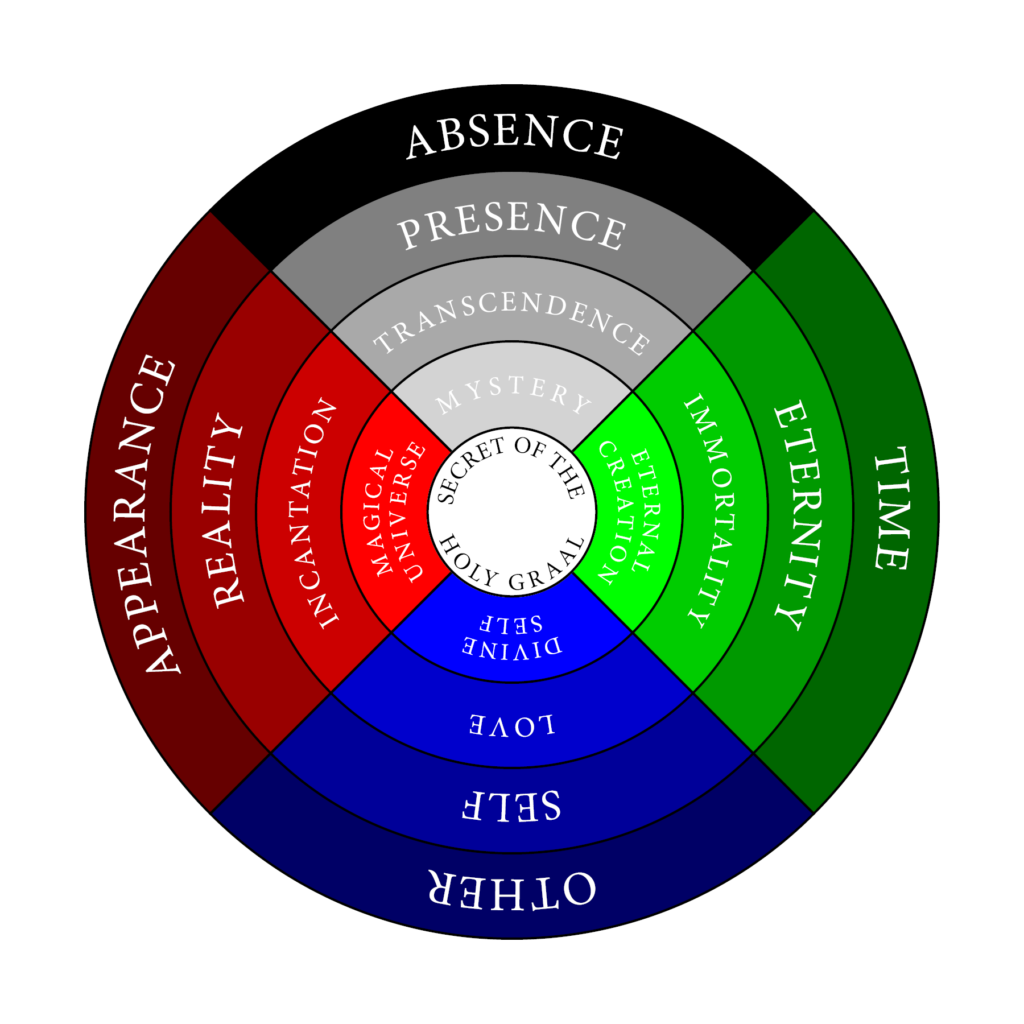
Not sure if I ever offered an explanation of my intention in making this.
This was meant to visualize some insights I had while listening to Alan Chapman’s Magia Teachings and reading Peter Kingsley’s book on Carl Jung, Catafalque, last summer.
The outer circle represents forms of absence. The flow of time is the absence of presence or the now. The other is the absence of self or self-subsistence. Appearance is the absence of reality.
Opposed to absence is the second circle of presence. Eternity is opposed to time by standing outside of it. It is the eternal present or the eternal now. Self is opposed to other. It is that which subsists, that which possesses itself. Reality is opposed to mere appearance by being the opposite of illusion.
Philosophy and spirituality aim to overcome absence and to achieve presence. They aim at timeless truth, the One Self or One Itself, the reality that lies behind the mere flow of appearances.
But overcoming absence is merely the first stage of the process. The next level of insight requires one to find absence in presence: eternity in the here and now, self in other and other in self, reality in appearance. Once both presence and absence are found in one another, their duality is transcended.
The union of time and eternity is immortality.
The union of self and other is love.
The union of appearance and reality is incantation or magical speech.
Aleister Crowley grasps this non-duality of duality and non-duality through the idea of 0=2. But 0=2 is not the mystery itself but rather the gateway to the mystery. 0=2 is the portal through which Thelemic spirituality opens on to the subterranean current of mystery underlying human transcendence as such.
Now we encounter eternal creation as the characteristic activity of the immortal God.
We find the divine self as the the loving comportment of All with Itself.
And we find the magical universe as the self-speaking totality.
Beyond even that mystery there is the mixing bowl or kratēr in which All is manifest: the divine individual, the sōtēr or the Holy Graal.
The Power Behind the Mass
My talk on Eucharistic magick is online now. It includes an in depth analysis of Sections VI-VIII of Liber XV: The Gnostic Mass.
The claim I make about the Mass—if I were to state it as succinctly as possible—is that the Mass was intended, in part, to bring into physical manifestation the spiritual power which was the source of the Book of the Law. So you can profitably view it as an attempt to bring the spiritual force of Thelema into the world by means of a public religious rite.
On the one hand, there’s nothing new or terribly controversial in such a statement. The Gnostic Mass is clearly a religious rite, and the purpose of a religious rite is for clergy to administer certain ideas, values, or virtues to a congregation. It would be rather odd to make the opposite argument, that Aleister Crowley created a religious service that administered the virtues of some spirituality other than Thelema.
I think what’s bound to make my argument controversial is the specificity of it. I don’t treat the power or spiritual potency from an abstract point of view. I show how Crowley specified it, put names to it, and even described its nature. If you accept the premises and the inferences to the conclusions from those premises, this creates a backstop for what is going to count as a good interpretation of the Mass. (Or it brings whatever existing backstop there is closer to the home plate.)
Considering the Mass alone, Crowley has many names for this spiritual potency or power considered in and of itself:
- “one secret and ineffable LORD”
- “our Lord …”
- “the LORD” (symbolized by the priest’s serpent crown)
- “O secret of secrets that art hidden in the being of all that lives”
- “the flame that burns in every heart of man, and in the core of every star”
- “Life, and the giver of Life”
- “Lord secret and most holy, source of light, source of life, source of love, source of liberty”
- “force of energy, fire of motion”
- “Thou who art I, beyond all I am, Who hast no nature and no name”
- “center and secret of the Sun”
- “hidden spring of all things known and unknown, Thou aloof, alone”
- “true fire within the reed”
- “source and seed of life, love, liberty, and light, thou beyond speech and beyond sight”
- “One in Three … Three in One”
What we can gather from these terms is that there is a divinity or a portion of divinity that is secret, ineffable, withdrawn, unmanifest, and completely transcendent. It is beyond our ability to describe or understand it. It is characterized by silence, but it is the source of speech and motion. And this divinity or some aspect of this divinity is concealed “within us” in some sense, and it is responsibility for our vitality.
Now one thing you may want to ponder from a theological or metaphysical perspective is this: If something is truly transcendent and unmanifest—if it is really “aloof, alone”—then how does it enter into manifestation? How does it have anything to do with the visible or manifest universe at all?
Crowley’s phrase for this in the context of the Mass, exemplified in the Creed, is the “Miracle of Incarnation”. He claims it is accomplished by means of the “Baptism of Wisdom”. As Sabazius has pointed out, this comes from Van Hammer’s elucidation of the name Baphomet as Baphe-Metis, the Baptism of Wisdom. One of the arguments I make in the talk is that, in the context of the Mass, Baphomet is the name given to this pure, transcendent spiritual potency when it is embodied or incarnated. This means that we can understand the Epiklesis of the Gnostic Mass on analogy with the transubstantiation of the Eucharist in the Roman Mass into the body and blood of Christ. This helps make sense of why the elements of the Eucharist are consecrated into a resurrection structure in Section VI. As Christ is the principle of resurrection in Christianity, Baphomet is the principle of resurrection in Thelema. At that point, the doctrines diverge, and I spend a lot of time in the talk examining exactly what resurrection means in a Thelemic context.
One angle I did not explore very much at all in my talk is how this transcendent spiritual potency is made manifest by the sex instinct. The only reference I made to this extraordinarily complex and interesting subject was to point out that the Priest, by virtue of the Lance and the scarlet robe, represents the microcosmic deity in the context of the Mass. This microcosmic deity is called “CHAOS, the sole viceregent of the Sun upon the Earth.” It is also called phallus. It is the “Lord of Life and Joy, that art the might of man, that art the essence of every true god that is upon the surface of the Earth, continuing knowledge from generation unto generation”. The magick of the Mass is almost certainly intended to parallel an analogous sex magick working. The seed (sperma) the Priest isolates from the Cake (consecrated to his body) is meant to be analogous with the spermatazoon produced by his literal body. The cup is magically linked with the Priestess’s body by means of the five crosses. The wine within it could be viewed as either his “blood” (which Crowley usually intends to represent semen) or her menstruum. I pointed out, as many have, that HRILIU represents the cry of orgasm.
Another thing I would point out—which I didn’t bother to touch on in the talk—is that Crowley believed sexual reproduction was a form of resurrection. Orgasm itself is a moment of subject-object union or samadhi, if only for a moment. The individuality of the man is not preserved, but his life-force continues in the child. The Mass Eucharist is explicitly referred to as a child both in the Anthem and during the Fractio. The solve or Aleph-phase of the operation reduces his seed to a kind of magical stem-cell state. By consuming this metaphorical “child,” the Priest is nourishing himself with the power of his resurrected or reborn life-force. It’s a simple way to look at the Mass, but it’s also perfectly valid and illuminating. The problem is that it’s not the only doctrine of resurrection Crowley had.
While I do not think it is wrong to point out that the Mass is the IX° sex magick operation under a different form, I think it very quickly leads to misunderstanding. One could start to believe that the spiritual reality of the Mass—and maybe of Thelema itself—is exhausted in fucking. Crowley himself makes reductionistic claims to this effect, e.g., “Semen is God.” Instead I wanted to focus on the structure shared both by the Mass and by the IX° Mass of the Holy Ghost in order to indicate the spiritual reality they are both aiming at, and which is reducible to neither of them. In the language of Eucharistic magick Crowley uses, both the Eucharist of two elements and the Eucharist of one element serve a common spiritual purpose. It is that purpose that I wanted to elucidate.
The argument I make in the talk—and which I have not seen made before—is that the spiritual purpose is the physical manifestation of this spiritual principle or potency represented by Hoor-Paar-Kraat, the God of Silence. This is the deity that Aiwass declares himself to be the “minister” of in the first chapter of The Book of the Law. As such, Aiwass’s speech is the speech of the god of silence. The Book of the Law itself is the “speech of silence” as Crowley says. And since this is the same spiritual potency we are embodying in the Gnostic Mass Eucharist, when we participate in the Mass, either as clergy or as congregants, we are in effect consuming the word. We’re being nourished by it. In yet one more way, the Book of the Law is becoming our sustenance and comfort.
As it turns out, the same principle is elastic and can manifest itself in many other ways. I already mentioned that it manifests as a sex-generative principle. In the talk I make a big deal out of showing how, in the context of an individual’s gnosis or spiritual experience, Harpocrates is also the Silent Self or the Holy Guardian Angel. From an alchemical perspective, I show how it is also the Philosopher’s Stone and connected with the IX° Elixir of Life. Crowley uses a lot of words to label this spiritual principle—Aleph, Fool, God of Silence, Holy Guardian Angel, Heru-Ra-Ha, Lord Most Secret, etc.—but the fact that it shows up in so many different places and is linked with the central spiritual concerns of Thelema I think justifies calling it out as the central organizing principle of Crowley’s spirituality. It is the point around which everything else is rotating. So I spend a lot of time in the talk laying out its structure. That structure—whether we’re talking about Eucharistic magick, alchemy, or initiation—is invariably tripartite and is represented by the formula IAO.
So what I was attempting to do in this talk was not only to show how to do Eucharistic magick or just parrot things Crowley says about the Eucharist. I also wanted to explain how it was he could make such extraordinary claims about Eucharistic magick, such that doing it would inevitably lead to Knowledge and Conversation of the Holy Guardian Angel, or that a particular version of it (identical with the IX° secret) would produce the Elixir of Life and grant immortality. So in this one phenomenon of Eucharistic magick, we find a menagerie of traditional and specifically Crowleyan spiritual concerns tied to the central mystery of Crowley’s spirituality, namely, Knowledge and Conversation. But rather than attempt to reduce the Gnostic Mass to sex magick, or to attempt to reduce both of those to Knowledge and Conversation, I attempted to explain all three in terms of the structure of the underlying spiritual reality motivating Thelema as a whole. And I suppose my assumption is that, because this underlying spiritual reality has vitality, an individual who understands how to make contact with that reality will become empowered by it.
The Food of the Gods
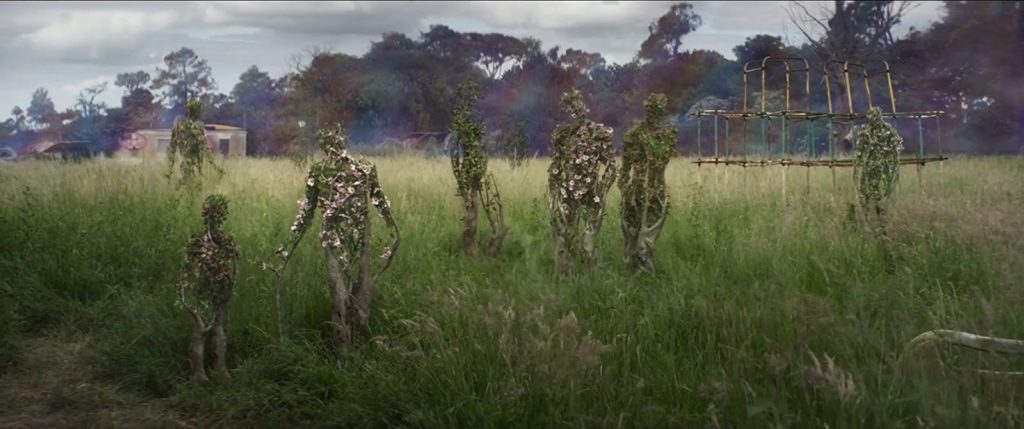
Ever since I had the insight that led me to write the short post on Harpocrates, the implications of it have spread like an invasive weed throughout all the rest of my thinking and perception.
It made its way into my post on the upward and downward paths in the Mass. It showed up in my NOTOCON talk. It’s lurking in the background of my recent article on healing and magic.
It really is just taking over.
The idea is quite simple. Each of us has been implanted with a divine seed. The seed consists in almost nothing more than remembrance of the Light we knew before incarnating. This seed lies dormant and silent within each of us, so that most people are not even aware of its existence. If it speaks to us at all, it is subtle and cryptic. It will speak to us seemingly from without, by guiding us into certain areas of life. It will speak to us seemingly from within, in the form of dreams. But most people take no notice of it.
But when we do take notice of it, a miracle occurs. It begins to grow. And so by seed and root and stem and bud and leaf and flower and fruit it will unfold and articulate itself into the light.
And I’ve come to the realization that the life-cycle of this seed is really the major theme of the spiritual path called Thelema—although the exact same phenomenon shows up in other forms of spirituality as well.
Crowley refers to this phenomenon under various names: secret self, silent self, seed, Aleph, Harpocrates, Hoor-paar-kraat, Virgin, the Fool who impregnates the King’s Daughter, etc. He always associates it with Malkuth, which is the soil in which it is implanted. He refers to its characteristic way of growth or development as true will.
Everything we do spiritually is not for our own sake but rather for the sake of this divine seed implanted within us.
But as we make the cultivation of this god within the theme and focus of our lives, something very odd happens. It begins to eat us. It consumes us.
Normally we understand the events of our lives to constitute a self. Ideas, thoughts, sense impressions, images, desires, words spoken, emotions felt, people loved, events remembered, events hoped for, actions carried out, paths chosen—we consider all of it to be mine. We think it is for a self, in a self, that it belongs to a self, that it is attached to a self, etc.
But as the divine seed sprouts and grows and unfolds within us, all of these happenings become food for, and become incorporated into, the growing body of this god. None of them—not even a simple sense impression or perception—happens for its own sake anymore. None of it—not even the simplest decision—can be said to be mine in the conventional sense of the term. Instead it is another element in the unfolding, developing image of this divine being.
We are the food of the gods.
What I describe may sound alien, even horrifying. But it only seems this way when we think we have something to lose through the process. This comes from the delusion that any of these thoughts, feelings, desires, or actions constitute a unity on their own. They don’t. But by becoming part of the metabolism and life cycle of the god, they acquire unity for the first time, the way the soup of molecules in the atmosphere becomes metabolized and structured into the outward form of a leaf.
At last, saying “I” can mean something.
It also gives new meaning to the expression, “There is no part of me that is not of the gods!”
The turning point for any person spiritually is when they realize that all the pain in their lives, all the difficulty and struggle and hardship, has never come from allowing this process to happen but has always arisen from resisting it. And that all the peace, happiness, and well-being lies in serving the divine within ourselves so it can fruit and release its seed into the world.
This is the means by which one becomes a god.
